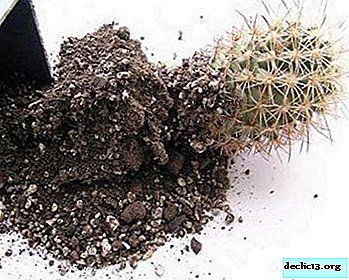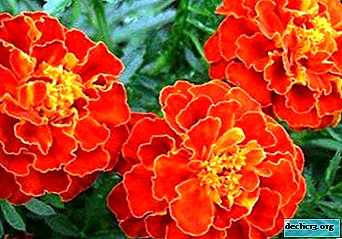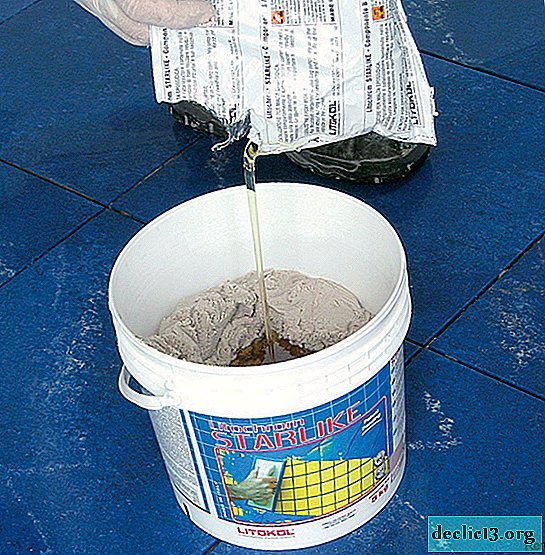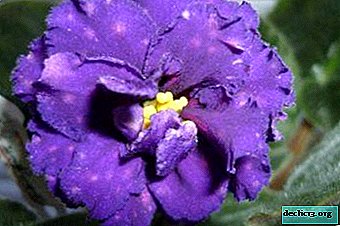Description and cultivation of the Sora variety radish. Advantages and differences from others

By cultivating the Sora radish, you can collect large yields of early root crops at your site.
Unpretentiousness, the possibility of cultivation throughout the season, stable immunity, versatility of use, quick adaptation to different climates, presentable presentation - the main arguments for choosing this particular variety for cultivation. But to get only quality products, it is important to observe all the nuances of agricultural technology.
Detailed description and description of this variety
Appearance
Root crops are characterized by a rounded, very even, without flaws, regular, rather large (diameter 5 cm) shape. The radish peel is painted in a rich scarlet shade, the flesh is white, without gaps and voids.
Sowing time
 Radish "Sora" refers to the early varieties. To obtain high-quality seedlings, it is enough that the soil warms up to at least +3 degrees. In greenhouses, planting begins in late February - early March. At home, cultivated year-round (with the condition - the presence of good heating).
Radish "Sora" refers to the early varieties. To obtain high-quality seedlings, it is enough that the soil warms up to at least +3 degrees. In greenhouses, planting begins in late February - early March. At home, cultivated year-round (with the condition - the presence of good heating).
The start of planting in open beds will depend on weather conditions.
- In the south, crops can be done from the end of March.
- In the middle lane and Moscow region - from the beginning - mid-April.
- In the Urals and Siberia, planting begins in May.
Average weight
The weight of each mature root crop is approximately 20 g. Given all the rules of agricultural technology, you can grow specimens weighing 35-37 g.
What is the yield per 1 ha?
From 1 ha of crops, up to 18 tons of Sora radish are harvested. Taking into account all the intricacies of cultivation agricultural technology, it is possible to obtain more than 20 tons of juicy root crops.
Where is it recommended to grow?
"Sora" is a universal hybrid, it is cultivated not only in open ground, but also in greenhouses, greenhouses, home conditions.
Resistance to diseases and pests
 The variety is characterized by disease resistance:
The variety is characterized by disease resistance:
- powdery mildew;
- mucosal bacteriosis;
- ordinary mosaic;
- shooting;
- bloom.
Radish is poorly affected by pests:
- moth;
- sawflies;
- scoops;
- weevils;
- cabbage flies.
Ripening period
Early ripe radishes can be harvested from the beds 24-27 days after the first shoots appear.
What soil does it prefer?
To get excellent radish yields, you need areas with light, fertile, loose soil of weak or medium acidity. The ideal soil for Sora root crops is sandstones and peat bogs.
In case of increased soil acidity, liming is necessary.Crop keeping
Ripe vegetables can be stored for 1 to 1.5 months. Shelf life of radishes is 97-98%. Root crops are well transported, without damage, without losing their presentation.
Breeding History
The variety "Sora" was developed by Dutch breeders at the end of the twentieth century. Already in 2000, root crops were included in the State Register of the Russian Federation, recommended for cultivation in all regions of Russia.
What is the difference from the rest of the species?
 Among the main differences are:
Among the main differences are:
- Lack of friability and voids in radish pulp.
- Early planting dates.
- High-quality presentation.
- Resistance to adverse weather conditions.
- Immunity to diseases and pests.
Advantages and disadvantages
Among the main varietal benefits are worth noting:
- Rapid ripening and obtaining early quality seedlings.
- Sustainable immunity.
- The probability of picking multiple crops per season.
- Excellent marketability (up to 98%) and transportation without loss of quality.
- Weak taste of vegetable pulp.
- High resistance of radish to drought, shooting, cold.
The disadvantages include:
- Obtaining not too large vegetables as a result of improper agricultural cultivation.
- Low yield when cultivated at home.
Why and where is it used?
Radish "Sora" is widely used in cooking, for the preparation of salads, canapes, side dishes, grown for sale. Root crops are excellent for cultivation on an industrial scale. Vegetables are easily stored, easily transported.
Features
Growing
The beds for spring crops are prepared in the fall. The excavated area is fertilized with a compost-ash mixture, mineral substances without the use of fresh manure. The beds where cruciferous vegetables (cabbage, arugula, radish, spinach, turnip) were not suitable for planting radishes.
For sowing, it is recommended to select large seeds (with a diameter of at least 3 mm). The grains wrapped in gauze are soaked in water for 8 hours.
Reference! To accelerate the germination of radish seeds, they are treated with growth promoting agents, for example, they are kept in aloe juice, a decoction of mushrooms, an ash solution. For disinfection, the grains are heated, immersed for 25 minutes in hot (+ 50 degrees) water, after cooling, dried.Pits in the planting grooves are indented from 3 to 5 cm, 10 cm between the rows. Seeding depth should not be more than 1-1.5 cm, for sowing in the winter - 2-2.5 cm without seed treatment with growth stimulants soaking and warming.
 There are two landing options:
There are two landing options:
- Tape. They are planted in two rows (between the strips they retreat 5-6 cm, between the holes 4-5 cm. For the convenience of weeding, the distance between the ribbons should be from 10 to 14 cm.
- Solid. Sown in rows according to the scheme 5 cm x 5 cm (can be used for marking cardboard egg trays).
The main care for the variety is watering. Immediately after sowing, they irrigate only during spring plantings, in greenhouses and at home. It is necessary to soak the soil on the breasts to a depth of 15 cm. Regular introduction of moisture begins with the appearance of the first sprouts.
Irrigation rate - 10 liters of water per 1 sq. Km. meter. During the season spend 2 abundant irrigation. In drought, the number of irrigations is increasing. After each procedure, the soil layer must be loosened. Weeding is done as needed.
Top dressing is not necessary, but in the presence of weak seedlings, on day 10, the beds, along with watering, are fertilized with a mullein solution (in a ratio of 1 to 10). In cold weather, feed with urea (30 g each). For better formation of vegetables, crops can be fertilized with minerals.
Harvesting and storage
Harvesting radishes is carried out in dry weather. To get larger vegetables, the terms can be tightened from 3 to 5 days. Root crops are dug up, pulled out by the tops. The soil is carefully cleaned by hand. If necessary, dry the radish, then, wrapped tightly in paper, lay in layers in boxes (preferably wooden) with holes.
Vegetables are stored at +4 or +6 degrees for about 1-1.5 months in the basement, the walls of which are pre-treated with lime.Diseases and Pests
There is a possibility of defeat of the Sora radish:
- Cruciferous fleas. To prevent infection, crops are covered with non-woven material (before sprouts), treated with wood ash, tomato infusion. For the fight also use drugs: "Decis", "Lightning", "Sherpa".
- Kiloy. To prevent disinfecting seeds, loosen the soil, take into account crop rotation. An effective tool is the treatment of beds with lime milk, mixing water (10 l) with lime (2 cups). Contribute 1 liter of fluid per 1 culture.
- Vascular bacteriosis. To exclude its appearance, grains must be warmed up before sowing. 10 days after germination, seedlings are sprayed with Planriz, Trichodermin. In the initial stages of the lesion, the treatment with Binoram, Phytolavin is considered effective.
- The black leg. As a prophylaxis, before sowing, the seeds are decontaminated with aloe juice. The soil is watered with a hot solution of potassium permanganate. To control the disease, vegetable stems are mulched with a layer of sand and ash (2 cm each), irrigated plantings with a potassium permanganate solution, and infected cultures are removed.
Similar varieties
 Among the popular analogues of the variety "Varieties" we can distinguish a hybrid radish:
Among the popular analogues of the variety "Varieties" we can distinguish a hybrid radish:
- Cririet. The similarity of vegetables lies in the early stages of ripening, weightiness of root crops, excellent keeping quality.
- "Celeste." Root crops are similar in terms of ripeness, weight, island taste of pulp, excellent transportation and storage.
- "Double". Radish similar in bright red skin, the absence of voids in the pulp, the same size, resistance to gray rot, high commercial quality.
- Coral An analogue in resistance to adverse growing conditions, excellent consumer value, the possibility for winter crops, universal use.
- Rondar They note the similarity in size, maturity, marketability.
Hybrid radish "Sora" is excellent for cultivation both in households and on an industrial scale. Unpretentious care, resistance to harsh conditions, the possibility of harvesting several crops per season, early maturity, high flavoring qualities, winter crops are the main criteria for choosing a variety for growing.
Interesting video
We offer you to watch a video with a description and characteristics of the Sora radish variety:

















